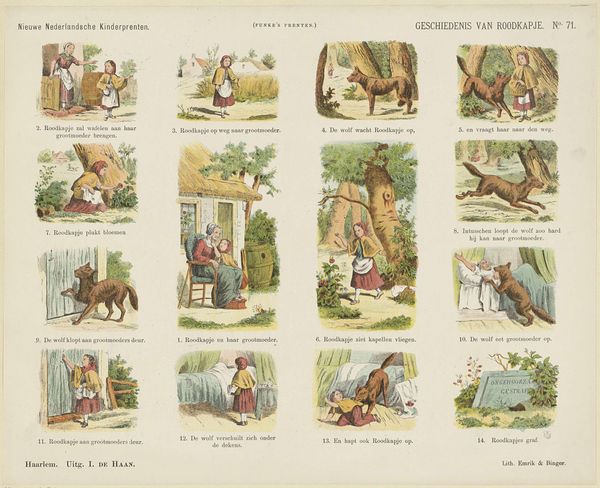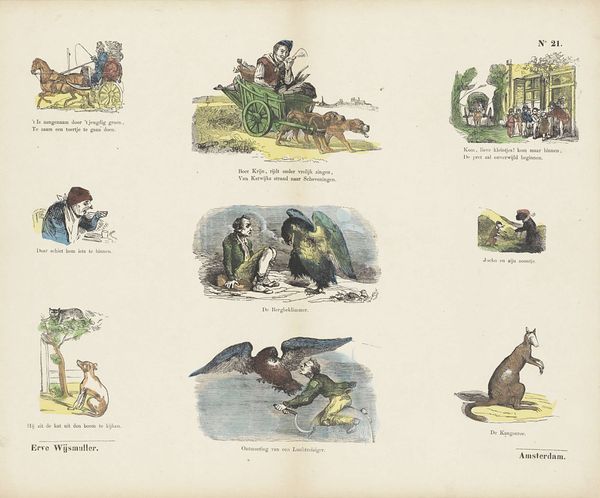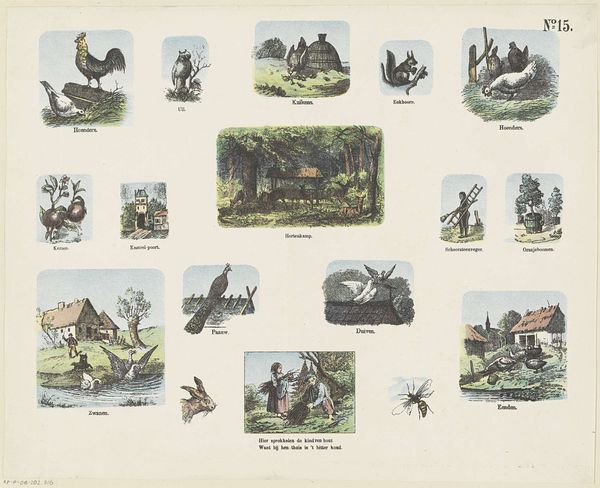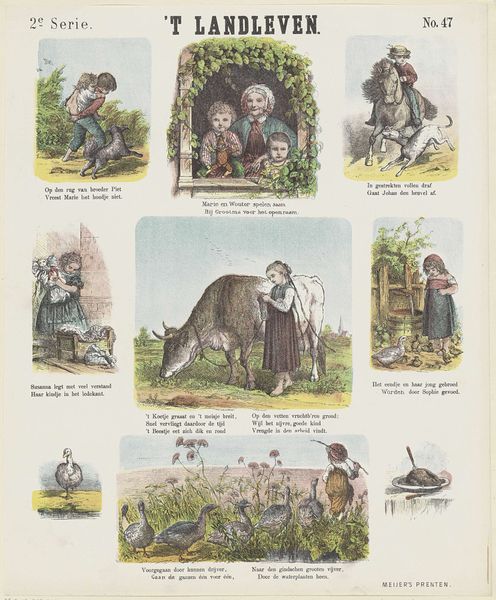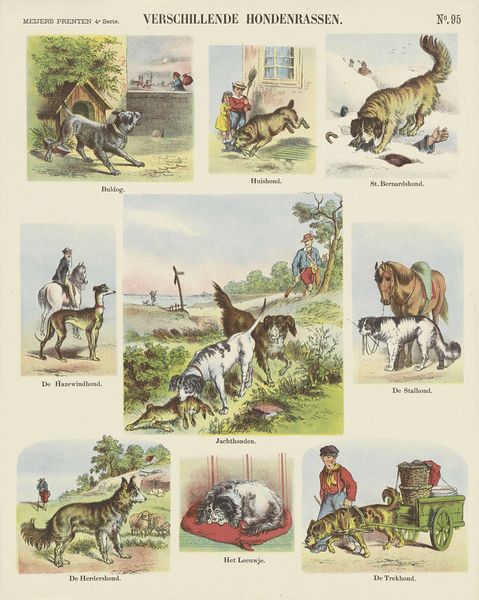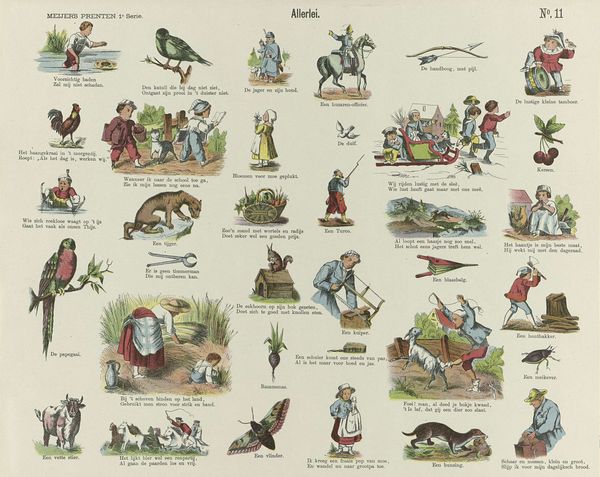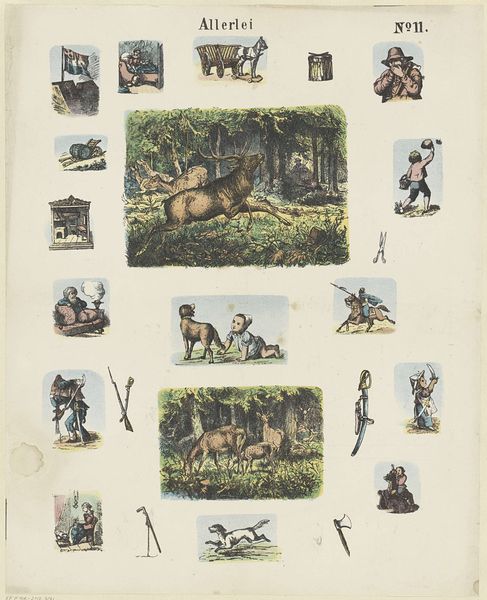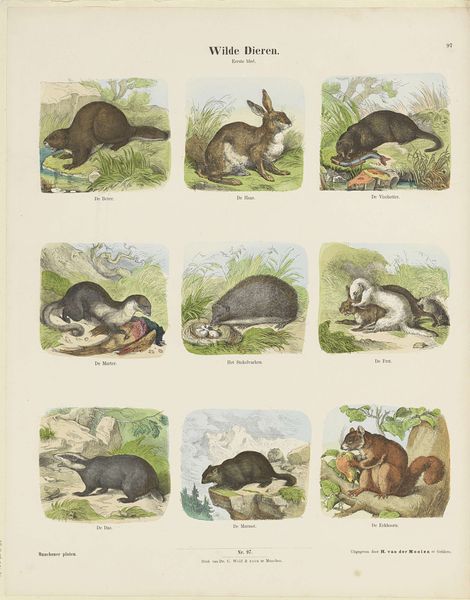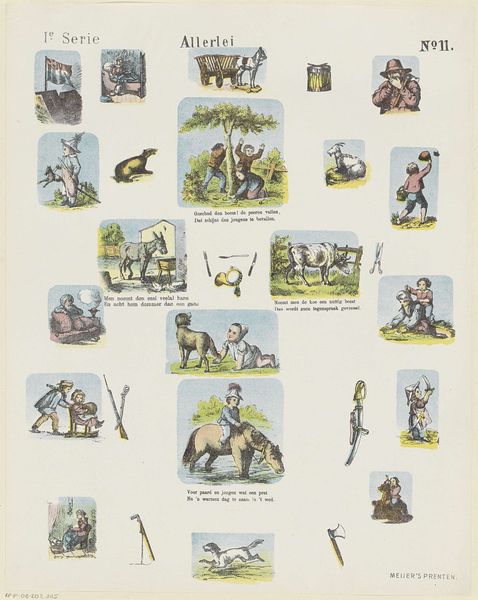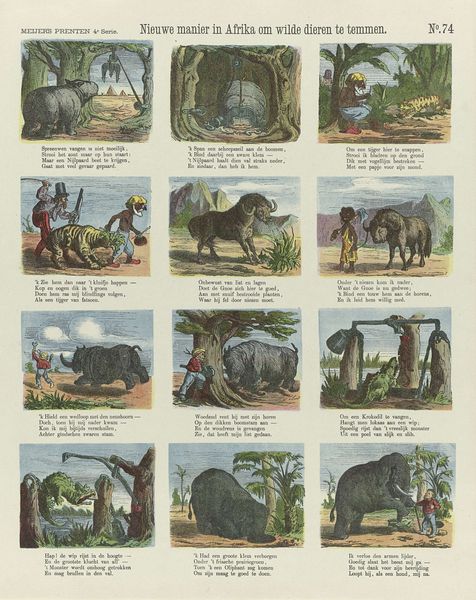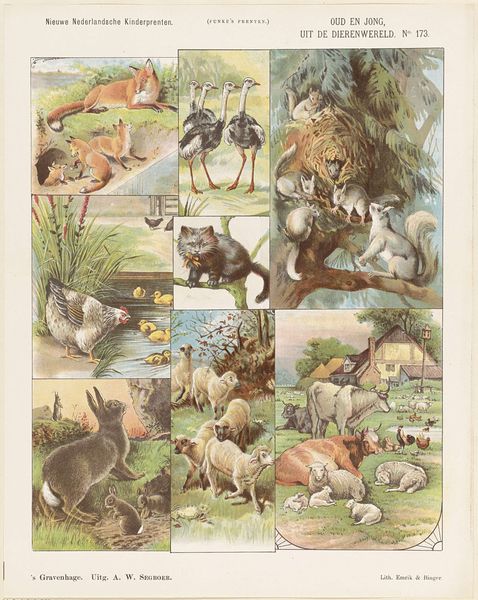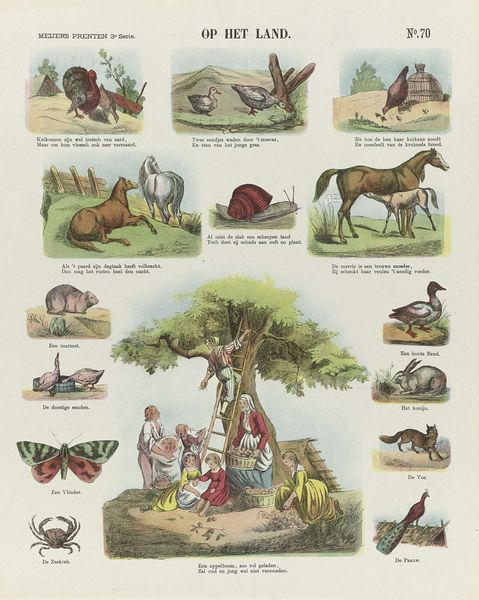
print, watercolor
#
narrative-art
# print
#
landscape
#
bird
#
watercolor
#
folk-art
#
watercolour illustration
#
genre-painting
Dimensions: height 343 mm, width 427 mm
Copyright: Rijks Museum: Open Domain
Curator: This delightful sheet of vignettes, known as "Verschillende taferelen" or "Various Scenes," was printed in 1873 by De Ruyter & Meijer, combining watercolor and printmaking techniques. Quite charming, wouldn't you agree? Editor: It has the feel of a page torn from a beloved storybook – slightly faded colors, like sunshine filtered through old glass. It sparks a forgotten world. I immediately love the rabbit... bottom left. Curator: Note how each scene offers its own tiny world. Children playing, domestic scenes, and landscapes are presented on a single sheet, speaking volumes about accessible visual media and the didactic tradition during the 19th Century. Each image would've been manually applied by hand – transferring onto paper for reproduction. Editor: Absolutely, they are didactic! And so intimate, somehow. That central scene, of the woman with the child outside the house with the fountain: it suggests serenity and comfort, whilst around it smaller tales hinting to small challenges – and also joys of that world. It almost gives you a complete story through one image. Do you feel the scale and organization mirror ideas on class structure too? Curator: Certainly. Consider the materials—printed illustrations, probably widely available and relatively inexpensive—played a key role in the mass dissemination of values and visual education throughout society, a role often overlooked when we consider "high art" in this period. Editor: Yes! So, it acts like a microcosm, neatly packaged for easy consumption! This has so much significance about production for me, almost turning our attention away from each image and to it all being compiled as one? Even in this supposed naivety. But you do also wonder who exactly would have engaged with such print? Was this created to reach as many people as possible or was the printing press less accesible? Curator: That's exactly where my focus lies too: in the context. Such pieces likely served to instill particular moral, or societal values, providing snapshots of accepted codes and conducts that were actively presented within nineteenth century dutch homes. Editor: It makes you consider a world that has almost evaporated. A poignant reminder of lives once lived. What remains are little fragments— these impressions on a page offering clues and whispers! Curator: Indeed. They may be "various scenes" on the surface, but they knit together to depict a society – a system - now passed and available to scrutinize thanks to its materials. Editor: Thank you so much! A real peek at times passed with a critical eye that re-interprets even such scenes.
Comments
No comments
Be the first to comment and join the conversation on the ultimate creative platform.
